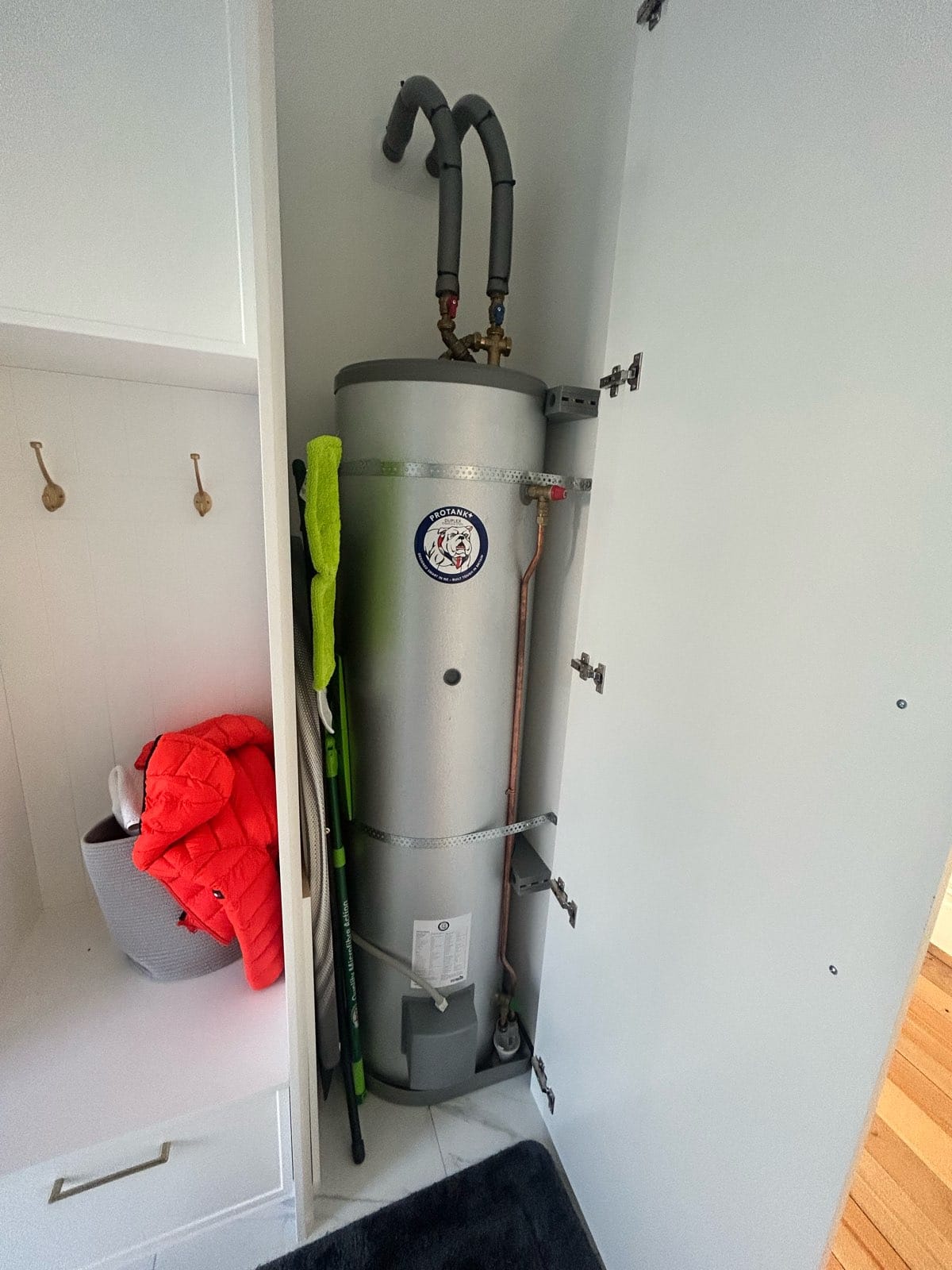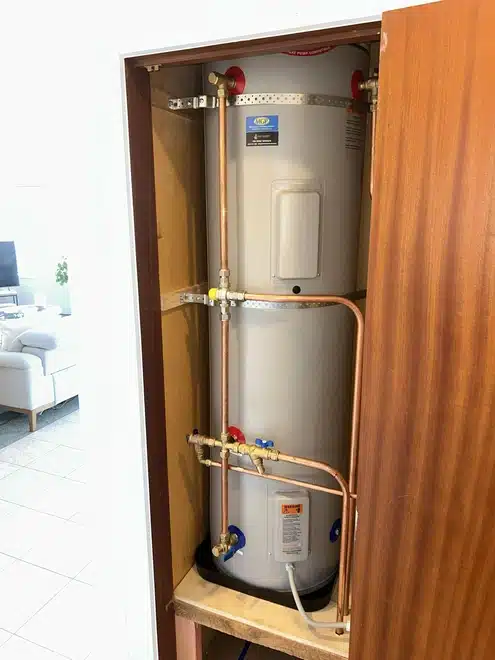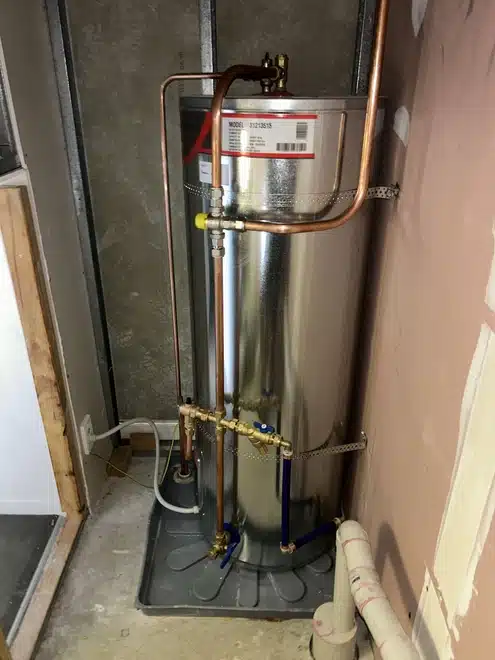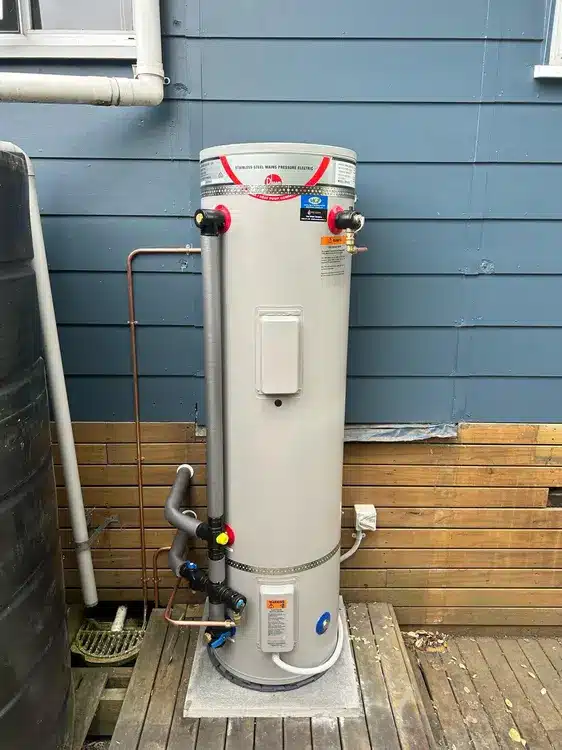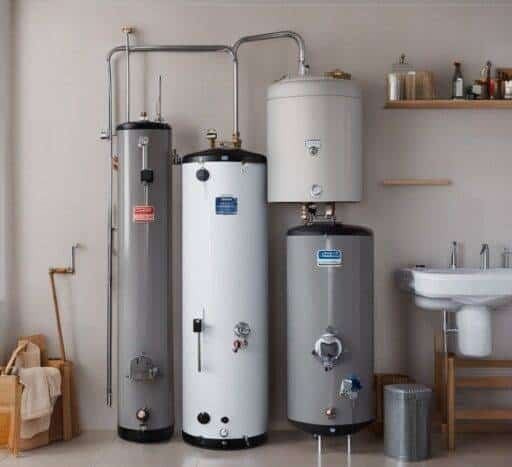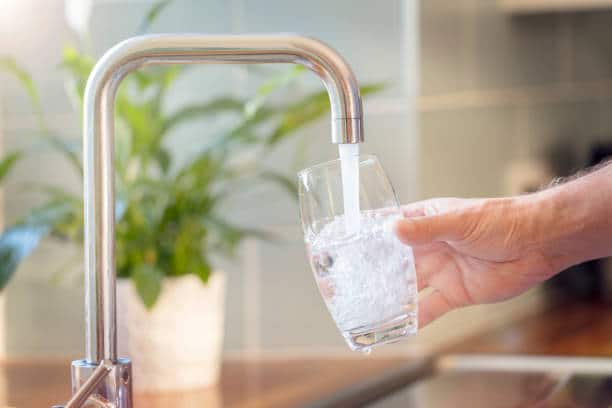The Main Components
The main components of an electric hot water cylinder consist of an insulated tank for storing heated water, electric heating elements to heat the water, thermostats to regulate the temperature, inlet and outlet pipes and valves, and an outer metal casing.
The size of the cylinder ranges from small under-bench models of around 10 litres up to large cylinders holding 400+ litres used for commercial buildings or large households.
How It Works
Cold water enters the electric water heater through an inlet pipe, usually located at the bottom of the unit. Inside the tank are one or more electric heating elements made of a high resistance metal such as copper or stainless steel. When the water heater is powered on, electricity flows through these heating elements, causing them to heat up rapidly.
As the heating elements get hot, they transfer thermal energy to the surrounding water inside the inner tank, causing it to get hot too. The now heated water becomes less dense than the cold water entering the bottom of the tank, so it naturally rises to the top while cooler water falls to the bottom to be heated. This natural thermal convection causes continuous water flow and helps transfer heat effectively.
Built-in thermostats control the temperature – usually between 55 to 75°C for residential water heaters and up to 90°C for some commercial models. The thermostat switches the heating elements on and off to maintain the set temperature. Insulation surrounding the inner tank minimises standby heat losses.
When a hot water tap is turned on, cold water enters the bottom of the cylinder and pushes the hot water out through the hot water outlet pipe at the top to supply heated water on demand.
Common Electric Heating Elements
There are two main types of electric water heating elements used – standard elements and quick recovery/over-sink units. Let’s explore them in detail.
Standard Elements
The most common design is a long metal rod sealed inside an aluminium or copper sheath. The standard 3kW unit is about 300mm long while the larger 4.5kW variant is around 450mm. Up to three standard elements may be installed in a large cylinder for quicker recovery.
Over-Sink/Quick Recovery Elements
For a small under-bench or point-of-use cylinder, these short, fatter heating units provide faster heat-up times. They usually cannot sustain constant water draw-offs for long periods due to higher kilowatt rating.
Both element types screw into sockets along the side of the inner tank. High-end electronically controlled models may have additional boosting/smart functions too.
Benefits of An Electric Water Heater
Electric water heaters offer home and business owners a number of benefits over other water heating methods:
Convenient and Comfortable – Provides hot water on demand whenever required.
Energy Efficient – Well insulated units conserve standby heat well.
Durable and Reliable – Long operational life expectancy of 15+ years.
Quick & Simple Maintenance – No plumbing modifications required. Heating elements can be replaced easily.
Lower Operating Costs – Up to 25% cheaper running costs than with bottled LPG or natural gas in some cases.
Compact Size – Cylinders come in wide range of shapes to suit small spaces.
Safe – No risks associated with gas or fuels and built to electrical safety standards.
Installing Your Electric Water Heater
When installing a new electric water heater, it’s important you comply with all legal requirements. This includes:
Location
Cylinders should be securely mounted on a flat wall near the most frequently used hot water source taps to minimise heat losses from pipe runs. They require adequate airflow so don’t fully enclose or build shelves over them.
Electrical Supply
A dedicated weatherproof power point is required, installed by a registered electrician. The circuit must have suitable fuse/breaker capacity for the cylinder wattage and an isolating switch mounted nearby for emergencies. Where possible, wire the cylinder direct instead of using a plug and socket which can spark through water exposure over time. Consider installing an earth leakage breaker for safety, especially in damp areas.
Building Consent
This is usually required from your local council before undertaking installation. The consent certifies that legal safety and efficiency standards are met. Some minor repair jobs may not need formal consent.
Licensed Plumber
A registered plumber is best to undertake the gas and water pipe connections. They can also advise on the best product to meet your hot water requirements.
Ongoing Inspection & Maintenance
While electric water heaters are generally reliable, an inspection every 2-3 years can help prevent problems. A registered service technician should:
Check thermostat calibration
Inspect heating elements and wiring
Replace anode rod if corroded
Flush the cylinder of sediment
Check pipe joints for signs of leakage
Test outlet temperature and pressure
This simple maintenance ensures your electric cylinder runs safely and efficiently for maximum hot water convenience over time.
Final Words
Now you have a clear idea on how an electric water heater works. If there are any issues, always work with an expert like us at Hot Water Solutions. It can offer much-needed assistance for you to keep the hot water system up and running for years without any issues.
Use our contact us page to reach us and we will be more than happy to discuss your hot water situation. Or give us a call on 0800 497658.
At Hot Water Solutions all we do is hot water!

